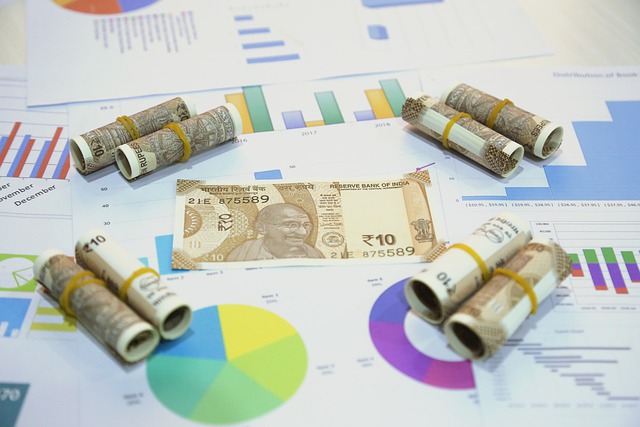What is repo rate? The repo rate is the rate at which commercial banks borrow money by selling their securities to our country’s central bank, the Reserve Bank of India (RBI), so as to maintain liquidity in the event of a fund shortage or due to statutory measures. it’s one of the RBI’s primary tools for keeping inflation under control.
How Does Repo Rate Work?
When you borrow money from a bank, you’re charged interest on the principal amount. This is often known as the cost of credit. Similarly, during a cash crunch, banks borrow money from the RBI and must pay interest to the financial institution. The repo rate is the name given to this interest rate.
Repo is an abbreviation for ‘Repurchasing Option’ or ‘Repurchase Agreement.’ it’s an agreement in which banks provide the RBI with eligible securities such as Treasury Bills in exchange for overnight loans. there’ll also be an agreement in place to repurchase them at a predetermined price. As a result, the bank receives the cash and therefore the central bank receives the security.
What are the Components of a Repo Transaction?
Preventing “squeezes” within the economy – The central bank adjusts the repo rate based on inflation. As a result, it aims to regulate the economy by keeping inflation under control.
Hedging and Leveraging – The RBI intends to hedge and leverage by purchasing securities and bonds from banks and provide take advantage exchange for the collateral deposited.
Short-Term Borrowing – The RBI lends money for a brief period of time, usually overnight, after which banks repurchase their deposited securities at a predetermined price.
Collateral & Securities – The RBI accepts gold, bonds, and other sorts of collateral.
Cash Reserve (or) Liquidity-Banks borrow money from the RBI to take care of liquidity or cash reserves as a precautionary measure.
How Does Repo Rate Impact Your Money?
An increase in repo rate will increase loan rates and also EMI but at the same time can even increase the FD interest percentage. In simple words, it increases your borrowing cost. Moreover, it also poses a huge burden on factories, companies, and industries that are dependent on loan money and have a huge debt in order to run their business. We all know these companies are crucial for the economy.
What is Meant by Reverse Repo Rate?
The reverse repo rate may be a mechanism that absorbs market liquidity, limiting investors’ borrowing power.
When there’s excess liquidity in the market, the RBI borrows money from banks at the reverse repo rate. Banks enjoy it by receiving interest in their central bank holdings.
RBI raises the reverse repo rate specifically when the economy is experiencing high levels of inflation. It encourages banks to deposit more funds with the RBI so as to earn higher returns on surplus funds.
RBI Repo Rate Cut History 2008 to 2022
| Effective Date | Repo Rate | %Change |
| 5 August 2022 | 5.40% | 0.5% |
| 8 June 2022 | 4.90% | 0.5% |
| May 2022 | 4.40% | 0.4% |
| 09 Oct 2020 | 4.00% | 0.00% |
| 06 Aug 2020 | 4.00% | 0.00% |
| 22 May 2020 | 4.00% | 0.40% |
| 27 March 2020 | 4.40% | 0.75% |
| 6 February 2020 | 5.15% | 0.25% |
| 07 August, 2019 | 5.40% | 0.35% |
| 06 June, 2019 | 5.75% | 0.25% |
| 04 April, 2019 | 6.00% | 0.25% |
| 07 February, 2019 | 6.25% | 0.25% |
| 01 August, 2018 | 6.50% | 0.25% |
| 06 June, 2018 | 6.25% | 0.25% |
| 02 August, 2017 | 6.00% | 0.25% |
| 04 October, 2016 | 6.25% | 0.25% |
| 05 April, 2016 | 6.50% | 0.25% |
| 29 September, 2015 | 6.75% | 0.50% |
| 02 June, 2015 | 7.25% | 0.25% |
| 04 March, 2015 | 7.50% | 0.25% |
| 15 January, 2015 | 7.75% | 0.25% |
| 28 January, 2014 | 8.00% | -0.25% |
| 29 October, 2013 | 7.75% | -0.25% |
| 20 September, 2013 | 7.50% | -0.25% |
| 03 May, 2013 | 7.25% | -0.25% |
| 17 March, 2011 | 6.75% | -0.25% |
| 25 January, 2011 | 6.50% | -0.25% |
| 02 November, 2010 | 6.25% | -0.25% |
| 16 September, 2010 | 6.00% | 0.50% |
| 27 July, 2010 | 5.75% | 1.00% |
| 02 July, 2010 | 5.50% | 1.00% |
| 20 April, 2010 | 5.25% | 0.50% |
| 19 March, 2010 | 5.00% | 1.00% |
| 21 April, 2009 | 4.75% | -0.50% |
| 05 March, 2009 | 5.00% | -0.50% |
| 05 January, 2009 | 5.50% | -0.25% |
| 08 December, 2008 | 6.50% | -0.25% |
| 20 October, 2008 | 7.50% | -0.25% |
| 30 July, 2008 | 8.00% | -0.25% |
| 25 June, 2008 | 8.50% | -0.50% |
| 12 June, 2008 | 8.00% | -0.25% |
| 30 March, 2007 | 7.75% | -0.25% |
| 31 January, 2007 | 7.50% | -0.25% |
| 30 October, 2006 | 7.25% | -0.25% |
| 25 July, 2006 | 7.00% | -0.50% |
| 24 January, 2006 | 6.50% | -0.25% |
| 26 October, 2005 | 6.25% | 00.00 |


